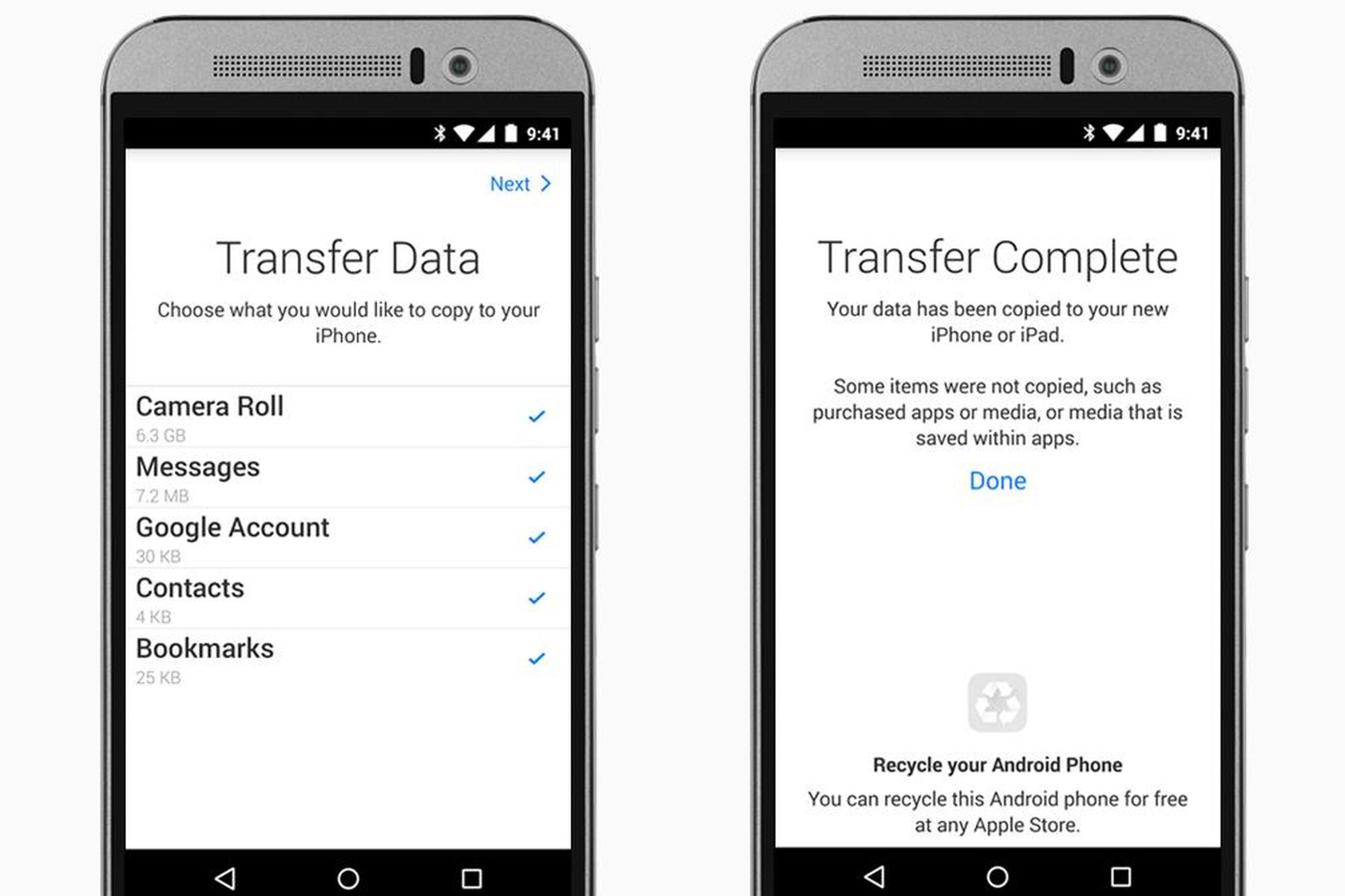
Introduction
Switching from Android to iPhone can be challenging, especially when transferring data. Traditional methods often require technical expertise and time. Thankfully, Apple’s "Move to iOS" app simplifies this process, allowing users to transfer essential data directly from an Android device to a new iPhone.
Understanding the Move to iOS App
The "Move to iOS" app is an official Apple tool designed for transferring data from Android to iPhone. Preloaded on the iPhone, it becomes accessible during the initial setup process.
How It Works
- Setting Up Your iPhone: Begin by setting up your new iPhone. Connect to Wi-Fi, create a passcode, and accept Apple’s terms and conditions.
- Choosing "Move Data from Android": During the initial setup, reach the "Apps & Data" screen. Tap on "Move Data from Android."
- Downloading and Opening "Move to iOS" on Android: On your Android device, download the "Move to iOS" app from the Google Play Store. Open the app once installed.
- Entering the Provided Code: Follow on-screen instructions on your Android device. When prompted, tap "Continue" on both devices. Agree to Apple’s privacy policies. Wait for a ten-digit or six-digit code to appear on your iPhone.
- Connecting to a Temporary Network: Your iPhone will create a temporary Wi-Fi network. On your Android device, tap "Continue" to join this network.
- Selecting Data to Transfer: Once connected, select the specific data to transfer from your old Android device to your new iPhone. This typically includes contacts, messages, photos, videos, mail accounts, calendars, and more.
- Setting Up Your iPhone: After selecting the data to transfer, your new iPhone will handle the rest. Once the transfer is complete, proceed with the setup and activation of your iPhone.
Advantages of Using Move to iOS
- Ease of Use: Designed to be user-friendly, making it accessible even for those who are not tech-savvy.
- Security: Ensures all data transfers occur over a private internet connection, providing added security.
- No Computer Required: Allows direct data transfer from Android to iPhone without needing any intermediate device.
- Free of Cost: Entirely free, making it an attractive option for those switching platforms without incurring additional expenses.
Limitations of Move to iOS
- Time Consumption: The transfer process can take anywhere from a few minutes to over an hour, depending on the amount of data.
- Data Limitations: Does not transfer music, books, or PDFs. These items need to be handled manually.
- Compatibility Issues: Only compatible with devices running Android 4.0 or above and iPhones running iOS 9 or above.
Alternative Methods for Data Transfer
While the "Move to iOS" app is reliable and convenient, other alternatives exist depending on specific needs and preferences.
Using Google Account
Another method involves using your Google account. Ideal for transferring extra files forgotten during the initial transfer or if the iPhone setup is already complete.
- Open Settings App on Android: Look for the "Backup" option and toggle on categories to be backed up.
- Sync Data with Google Account: Ensure all desired data is synced with your Google account.
- Set Up Your iPhone: Once set up, go to the "Settings" app and select "Accounts & Passwords."
- Add Google Account: Add your Google account to your new iPhone and sync all backed-up data.
Using Third-Party Apps
Several third-party apps can help transfer data from Android to iPhone, offering a more comprehensive and user-friendly approach.
-
MobileTrans App: Known for fast cross-platform transfer speed, safely and seamlessly transfers multiple types of phone data without compromising quality.
- Features:
- Scan QR codes to connect between devices
- Support transferring 18 kinds of data, including messages, music, videos
- Transfer WhatsApp messages, photos, attachments, and more social apps
- Support the latest iPhone OS and Android OS
- Features:
-
SHAREit App: Allows users to transfer files wirelessly between devices. More suited for PC-to-smartphone transfers but can also be used for direct Android-to-iPhone transfers.
- Features:
- Quickly transfer files between devices
- Handles all sorts of data like photos, videos, contacts, music documents
- Ability to share data to multiple devices simultaneously
- Features:
-
AirDroid Personal: Handles all file transfer needs between iPhone and Android or any other devices. Guarantees super-fast data transfer without interruption.
- Features:
- Quickly transfer data between any two devices in lossless quality
- Handles all sorts of data like photos, videos contacts music documents
- Ability to share data to multiple devices simultaneously
- Features:
-
Copy My Data: Free and secure software by Media Mushroom allows users to instantly transfer Android files to an iPhone through a strong Wi-Fi connection.
- Features:
- Easy to use
- No in-app purchase
- Transfer contacts pictures calendar entries and much more from Android to iPhone
- Features:
Tips for Smooth Data Transfer
To ensure the data transfer process goes smoothly, consider the following tips:
- Charge Both Devices: Make sure both devices are at least 75% charged to prevent interruptions.
- Stable Wi-Fi Connection: Ensure a stable Wi-Fi connection as the transfer process relies heavily on a strong internet connection.
- Organize Your Data: Double-check the amount of data being moved. Ensure the iPhone has enough storage capacity to receive every file. Organize old files on the Android phone, decide what to keep, store in an external drive, and purge before moving.
- Avoid Interference: Avoid using devices during the transfer process as it can cause interference and slow down the transfer speed.
Transferring data from an Android device to an iPhone can be simplified with the right tools and methods. The "Move to iOS" app is a reliable tool that allows users to transfer essential data directly. Additionally, third-party apps like MobileTrans, SHAREit, AirDroid Personal, or syncing data via Google account provide multiple options depending on specific needs and preferences. By following these steps, tips, and methods, users can ensure a smooth data transfer process, allowing full enjoyment of their new iPhone without leaving any valuable data behind.
